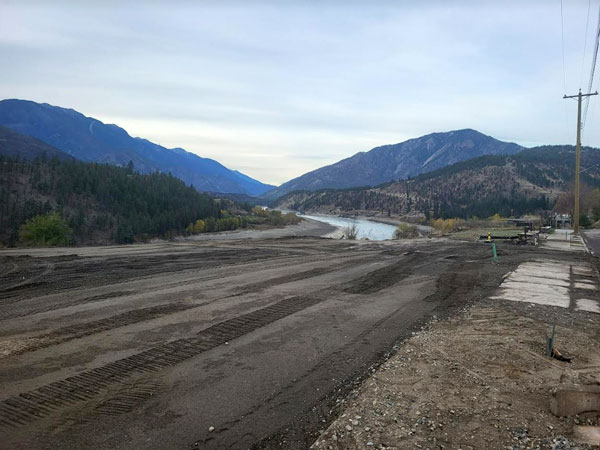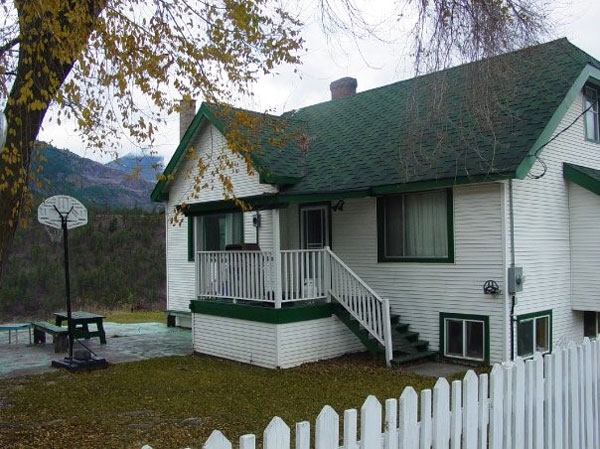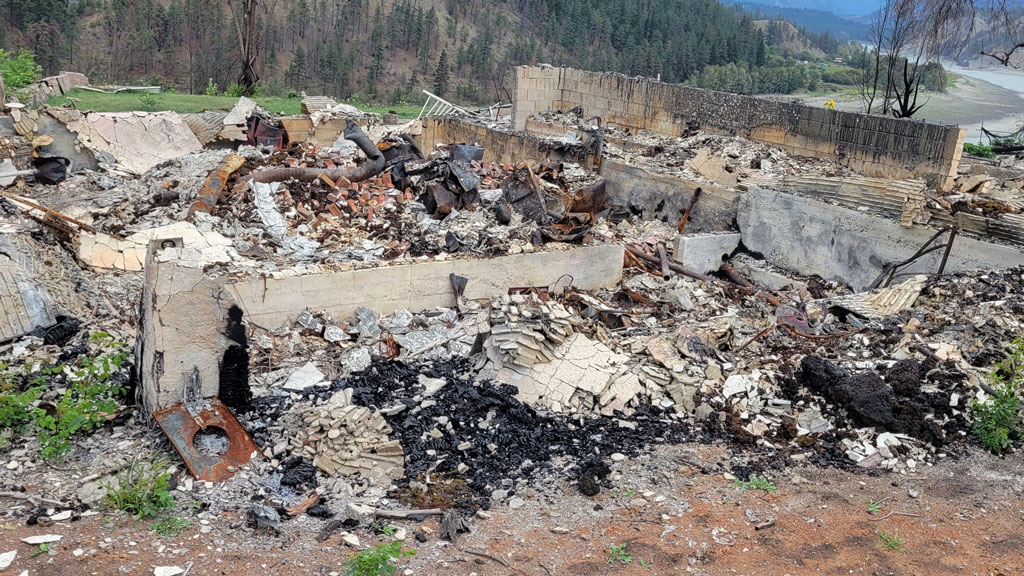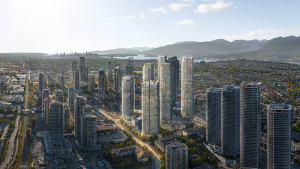It’s been more than 27 months since almost the entire B.C. village of Lytton burned to the ground, a definitive cause still unknown. With a population of roughly 250 at the time, the community, 260 kilometres northeast of Vancouver, remains unbuilt.
Former residents held a rally Oct. 18 demanding answers as to why, after more than 850 days, construction hasn’t started.
“We are $40 million in and not a house has been built,” says Jackie Tegart, who represents Lytton as the BC United MLA for Fraser-Nicola. “There’s been no clarity around the process. People’s lives have been on hold because of a fire.”
It’s unknown what will happen in the next few months in the Fraser Canyon community, she says.
Lytton’s mayor, who grew up in the village, has been trying to find answers, but to no avail.

“It feels like nothing has been done to expedite this (rebuilding),” says Denise O’Connor, a retired school principal who lost her home in the fire.
Money hasn’t been the issue, she says. It’s the way the rebuild process has been handled.
“There are many factors why it’s so slow. Archeology is just one of them,” she says.
But it’s archeology that’s garnered recent attention after a resident was told she’d have to pay roughly $1,600 per day, not covered by insurance, for archeological monitors once she started to rebuild. The monitors are needed in the event artifacts are found during construction.
Lytton is situated on an area that has been home to Indigenous people for centuries. At the confluence of the Thompson and Fraser Rivers, the 2.5-square mile community lies in a geographically and historically significant region.
After the June 2021 fire destroyed almost everything, AEW, an acronym for Architecture, Environment, Wildlife, was hired in spring 2022, by the village, to do archeological work.
AEW is owned by the Nlaka’pamux Nation Tribal Council.
Achinie Wijesinghe is AEW’s director or archeology and has been working in Lytton since the spring of 2022. One month of work remains, she says.
Despite criticisms about the very slow rebuilding process, Wijesinghe says AEW had to follow provincially-mandated processes outlined in B.C.’s Heritage Conservation Act, which applies to public and private land.

“It’s the law,” she says. “I report to the branch. I have a permit. I have to make sure the methodology of the permit is upheld.”
In addition to bureaucratic obligations, delays to the work were caused by not enough fill being available, not enough machinery onsite, lack of workers and the weather.
O’Connor, whose insurance covers the full replacement of her home, will rebuild on her lot. She estimates about 40 per cent of former residents did not have home insurance.
O’Connor has been quoted $400 per square foot for a new home, a price that would have been lower if work could have started a year ago.
On top of building costs, there is no accommodation for construction workers. But rumours of a camp are circulating.
As well, Lytton has no restaurant.
Some services are slowly returning, including a bank in a trailer, doctor service in another trailer and a small grocery store created with four trailers. Canada Post is also operating.
The sewage treatment plant was not destroyed and the water system is functioning, O’Connor adds.
Transporting building materials to the community will be a challenge. During November 2021’s record rainfall, Highway 1 was washed out at Jackass Mountain, 20 kilometres south of Lytton. Reconstruction of the highway continues.
AEW started ground work around March 2022, when a contractor began removing building foundations and debris.
“To tackle remediation, the whole village was divided into seven zones,” Wijesinghe says.
Zones 5, 6 and 7 have the highest density of archeological sites.
A strip of land along the Trans-Canada Highway, which was outside the zone, was also included.
After foundations were removed, the earthen area was examined. Some of the homes were built in the 1950s. There were even homes built atop older structures, which had not been removed.
“It was like a layer cake,” Wijesinghe says.
Another contractor was involved with removing found contaminants.
Wijesinghe explains the fire caused large explosions when items such as propane tanks or other flammables ignited. The halo of poisons leached into sediment, requiring removal.
As well, asbestos and many household chemicals contributed to contamination. Some homes had been storing items for decades.
Contaminated material was piled near the property and another contractor tested levels. If highly-contaminated, the material was “hot-loaded” and bound for a dump.
Monitors were present during the process.
If not poisoned, the material was screened for artifacts.
If artifacts were exposed during contamination removals, the AEW team would do a full surface inspection. Shovel tests were also done to determine the horizontal and vertical extent of the archeological site.
When artifacts were found, the excavators would move to another property to allow monitors to search the excavated area for more items.
Some of the 7,000 artifacts include small birch bark scrolls, different types of scraping tools, various knives made with rocks like basalt, bone fragments from animals such as bears, deer, fowl, muskrats and human bones. The age of the stone tools was pegged at 7,500, but inhabitants could have been there earlier, Wijesinghe says.
In May 2023, all remediation and removal of contaminants was complete and in June, backfilling began. A finish date is unknown.
O’Connor guesses with winter approaching, not much construction will be done. But when the first home is finished, likely in the spring, the mayor says Lytton will celebrate.











Recent Comments